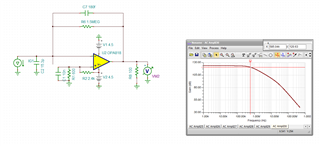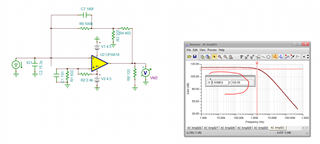Other Parts Discussed in Thread: OPA656, , OPA657
Hi,
I'm trying to understand the principle of the TIA OPAmp selection.
I used tha TIA_Claculator and input the requirements:
( TIA output bandwitdh = 1MHz, Gain resistor = 1.5Mohm, C_APD_12053-10_Terminal = 15pF, C_TOT_OPA656 = 3.5pF, C_pcb = 0.3pF )

And I guess it uses the same fomula:
![]()
So the required GBP of the OPAmp should be large than around 180MHz.
For this requiment, there are lot numbers of OPAmp could be selected.
I simulated with OPA656 and OPA818. Both of them satisfied the stability and BW with same gain resistor (and same compenation capacitor).
OPA656 - Phase margin 61°
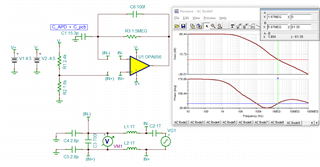
OPA818 - Phase margin 84°
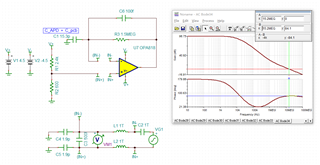
OPA656 bandwidth 1.33M

OPA818 bandwidth 1.13M
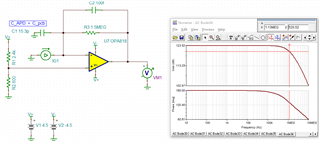
And compared the noise characterstic, the OPA818 is a llittle better than OPA656
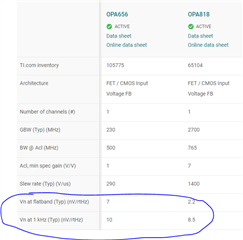
So my question is -
1) For my requirement, to get best performance (low noise, stable), the OPA818 is better, is it right? Or is there other part you would recommend?
2) Are there any other things/parameters I should take into consideration?
Thanks and Best regards.


